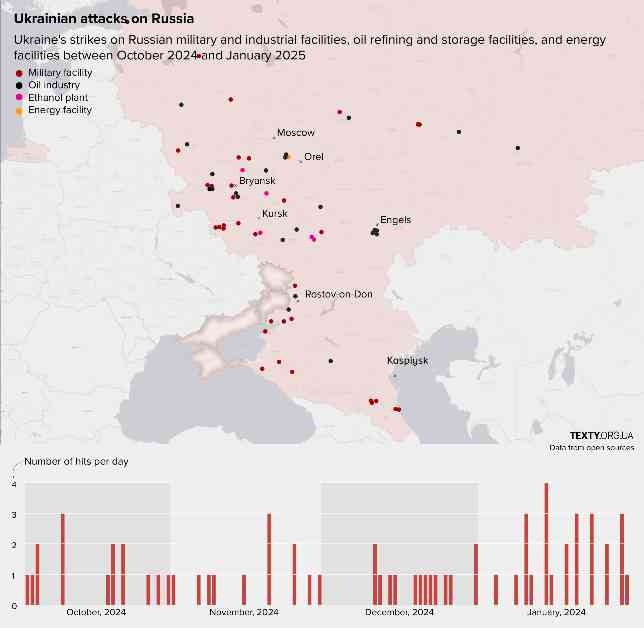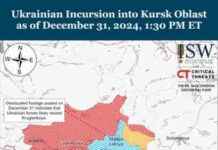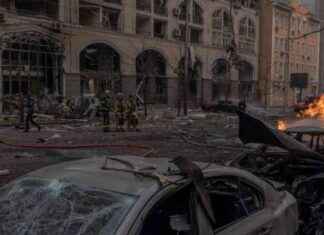Ukrainian Air Strikes: A Strategic Evolution Unveiled
Ukrainian airstrikes on Russian territory have taken a significant turn over the past four months. Through a comprehensive analysis of strike data collected from October 2024 to January 2025, Ukrainian outlet Texty and Euromaidan Press have shed light on key developments and emerging targeting priorities.
Distilleries in the Crosshairs
In October 2024, Ukrainian forces initiated strikes on Russian distilleries that supply alcohol to the defense industry. These distilleries, located in Belgorod, Voronezh, Tula, and Tambov, play a crucial role in producing alcohol for aviation fuel and explosives. Notably, the Biokhim plant in Russia’s Tambov Oblast was hit in late October 2024, serving as a vital supplier to various Russian defense sectors.
The alcohol produced by these distilleries finds its way into aviation fuel production, aircraft anti-icing systems, and explosive components manufacturing, according to Texty’s findings.
Debut Strikes on Caspian Port
On 6 November 2024, Ukrainian drones made their first targeted attack on Dagestan’s Caspian port of Kaspiysk, situated approximately 1,500 kilometers from the Ukrainian border. This assault resulted in damage to two Russian Gepard-class frigates, the Tatarstan and Dagestan missile ships. Notably, the attack was orchestrated by the Main Directorate of Intelligence (HUR), pointing to the strategic significance of this move. Texty highlights that Iran supplies weapons to Russia through this very port.
A subsequent attack on the Caspian port on 30 November compelled Russian authorities to temporarily shut down the nearby Makhachkala airport, underlining the disruptive impact of these strikes.
Intensified Assaults on Russian Military Facilities
Military installations emerged as prime targets in the recent wave of Ukrainian airstrikes, with half of the 66 successful strikes honing in on these strategic locations. Ukrainian forces aimed their attacks at airfields, drone assembly bases, training facilities, command posts, protected bunkers, and ammunition depots.
Military Industry Under Fire
In a notable shift, Ukrainian strikes on Russian military factories have increased in frequency over the past four months. An operation conducted on 14 January 2025 targeted the Bryansk Chemical Plant in Seltso, known for producing explosives for various types of ammunition. This attack led to hours-long explosions and damage to Tor and Buk anti-aircraft systems, critical components in Russia’s defensive arsenal.
Moreover, fires broke out at multiple strategic facilities, including the Kristall plant in Engels, Kazanorgsintez plant in Tatarstan, and Saratov refinery, underscoring the broad scope of these assaults on Russian military infrastructure.
Oil Infrastructure Attacks Intensify
The period spanning October 2024 to January 2025 witnessed a notable escalation in attacks on Russia’s oil industry, accounting for nearly half of all strikes conducted. Ukrainian drones targeted at least 25 oil industry facilities in January alone, marking a significant shift in targeting strategy.
One of the major strikes targeted the Andreapol station in Tver Oblast, a critical component of the Baltic Pipeline System 2 responsible for pumping oil to the Ust-Luga port. This assault, which took place on 29 January 2025, aimed to disrupt Russia’s oil supply chains and strategic operations.
As the attacks on Russian oil infrastructure intensified, fires erupted at oil depots in various regions, including Oryol Oblast, Krasnodar Krai, Voronezh Oblast, Smolensk, and Rostov Oblast, among others, painting a vivid picture of the widespread impact of these strikes.
A Strategic Approach to Disrupting Russian War Logistics
According to Ukraine’s General Staff, the systematic targeting of Russian infrastructure serves a clear purpose – disrupting supply chains supporting Russian forces. From military manufacturing plants to ammunition depots, fuel storage facilities, and command centers, each target plays a crucial role in sustaining Russian combat operations in Ukraine.
The operations conducted by Ukrainian forces are designed to continue until Russian forces face significant challenges in maintaining their military operations in Ukraine. This strategic approach underscores Ukraine’s commitment to disrupting the logistical backbone of Russian military activities in the region, with a clear aim of altering the course of the ongoing conflict.
As the conflict continues to unfold, the evolving nature of Ukrainian airstrikes on Russian territory paints a complex picture of strategic maneuvers and tactical precision in a high-stakes geopolitical landscape. The significance of these developments reverberates beyond the battlefield, shaping the contours of regional dynamics and global security paradigms in unforeseen ways.

















